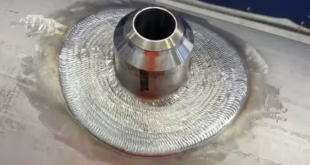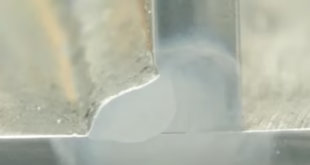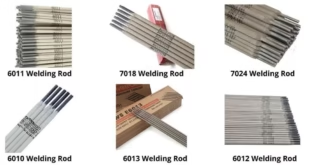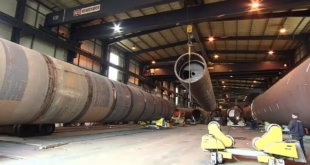Copper Pipes and Tubes
Introduction to Copper Pipes and Tubes
Copper pipes and tubes are commonly used in various industries, including plumbing, HVAC (heating, ventilation, and air conditioning), and medical fields. While many people recognize the benefits of copper for its durability and corrosion resistance, it’s also a highly significant material in the welding world. From a welding perspective, copper is both a challenge and an opportunity.
Welders need to have a deep understanding of how copper behaves under heat, how it reacts with filler materials, and how to achieve high-quality joints that will stand the test of time. This article will explore copper’s properties, the types of copper pipes used in different industries, and the best welding methods for ensuring strong, reliable connections.
Types of Copper Pipes and Tubes
Understanding the different types of copper pipes is crucial when preparing for a welding job. The type of copper pipe you’re dealing with will affect not only your welding approach but also the tools and techniques you need to use.
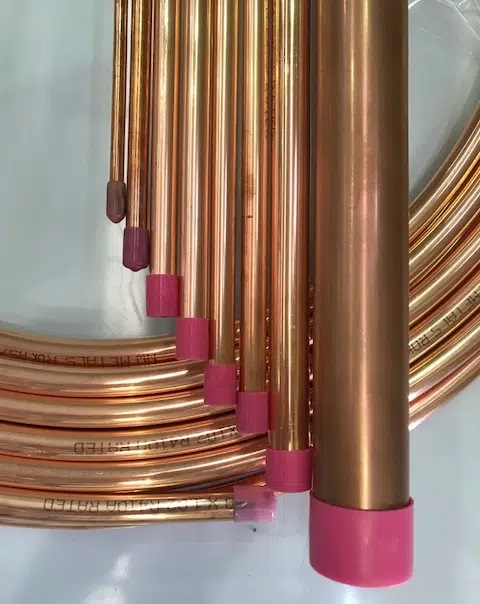
Soft vs. Rigid Copper Pipes
Copper pipes come in two primary forms: soft (annealed) and rigid (hard-drawn).
- Soft copper pipes are extremely flexible and can be bent into shape without the need for special tools. This flexibility is useful in installations where tight spaces or curved routes are necessary. Soft copper is often used in refrigeration lines, HVAC systems, and some plumbing repairs where bending the pipe by hand is required.
- Rigid copper pipes are much stiffer and less malleable. They are generally used for more permanent installations, such as water supply lines. Rigid copper pipes require fittings or special bending tools to shape them, and they are often cut to size with pipe cutters before welding or joining.
Both types of copper pipes require different approaches in terms of welding preparation and handling due to their physical properties.
Type K, L, and M Copper Pipes Explained
Copper pipes are further categorized into three main types based on their wall thickness:
- Type K copper pipes have the thickest walls and are typically used for underground installations where they need to withstand high external pressure. This type of pipe is commonly used in municipal water systems and other high-pressure applications.
- Type L copper pipes have slightly thinner walls than Type K but are still durable and strong. Type L is widely used in both residential and commercial plumbing, particularly in applications that require moderate pressure and exposure to the elements, such as outdoor installations.
- Type M copper pipes have the thinnest walls and are typically used for low-pressure applications, such as in heating systems or indoor plumbing where durability is still necessary but the risk of damage or pressure isn’t as high.
Knowing which type of pipe you’re working with is important because thicker-walled pipes (like Type K) will require more heat during welding, while thinner-walled pipes (like Type M) can be more sensitive to overheating.
Medical-Grade Copper Tubing
Medical-grade copper tubing is specifically designed for use in healthcare facilities, where maintaining sterility and preventing contamination is critical. These pipes are used for delivering medical gases like oxygen, nitrous oxide, and compressed air. The standards for welding and joining these pipes are much stricter because any leaks or contamination can have serious consequences for patient safety.
When welding medical-grade copper tubing, precision and cleanliness are paramount. The welder must ensure that no debris or contaminants enter the system during the welding process, and all joints must be thoroughly inspected to ensure they meet safety standards.
Properties of Copper
Copper has several unique properties that make it both advantageous and challenging to weld. Let’s break these properties down:
Conductivity
Copper is an excellent conductor of heat and electricity. This high thermal conductivity can be both a blessing and a curse when welding.
- Heat Distribution: Copper’s ability to quickly dissipate heat means that heat from your welding torch spreads rapidly throughout the pipe. While this helps prevent localized overheating, it also makes it harder to maintain the high temperatures required for a strong weld. You’ll need to manage heat carefully to ensure a strong, even bond between the pipe and the filler material.
- Electrical Conductivity: Copper’s high electrical conductivity makes it an essential material for electrical wiring and other conductive applications. However, this also means that special care must be taken when welding around copper that will carry electricity, to avoid damaging the material or creating weak points.
Malleability and Ductility
Copper is both malleable and ductile, meaning it can be easily shaped and bent without cracking or breaking.
- Malleability: This property allows copper pipes to be bent or shaped during installation, making it easier for welders to adjust the pipe to fit a specific layout.
- Ductility: Copper’s ductility means it can be drawn out into thin wires without breaking. This makes it a versatile material in applications where pipes need to be long and continuous, as they can be welded together without the risk of brittle failure.
For welders, copper’s malleability and ductility are key advantages because they allow for greater flexibility in installation and repair work.
Corrosion Resistance
Copper’s natural resistance to corrosion is one of its most valuable traits. Unlike other metals, copper doesn’t rust or degrade easily when exposed to water or other environmental factors. This makes it ideal for use in plumbing and HVAC systems, where pipes are often exposed to moisture and fluctuating temperatures.
When welding copper pipes, it’s important to preserve this corrosion resistance by using appropriate filler materials and avoiding contamination during the welding process. Proper sealing of joints is also necessary to prevent leaks or exposure to corrosive elements.
Welding Techniques for Copper Pipes and Tubes
Welding copper requires specific techniques, depending on the type of joint, the pipe’s application, and the environment. Here are the most common methods:
Brazing vs. Soldering vs. TIG Welding
- Brazing is the most common method for joining copper pipes in plumbing and HVAC applications. It involves heating the pipe and a filler metal (often silver-based) to a temperature above 840°F (450°C). The filler metal melts and flows into the joint, creating a strong, leak-proof bond. Brazing is ideal for high-pressure and high-temperature applications because it creates a more robust joint than soldering.
- Soldering is a similar process but occurs at lower temperatures, typically below 840°F (450°C). Soldering is used for lower-pressure systems, like domestic water lines. It’s easier to perform but creates weaker joints than brazing, so it’s not suitable for high-pressure systems.
- TIG Welding (Tungsten Inert Gas) is a precise method used in applications that require clean, high-quality welds. TIG welding involves using a tungsten electrode to produce an arc that melts the base metal and a filler rod. TIG is typically reserved for high-end applications, such as in medical systems or industrial settings, where precision is critical.
Preparing the Pipe for Welding
Before welding, you must clean the copper pipe to remove any dirt, oil, or oxidation that could interfere with the weld. Use a wire brush or abrasive pad to scrub the surface until it’s shiny and free from contaminants. This step is essential because even small amounts of residue can prevent the filler material from bonding properly.
Recommended Filler Materials
For brazing, silver-based filler materials are common due to their high strength and compatibility with copper. Lead-free solders are recommended for soldering, especially in potable water systems, to ensure safe drinking water. For TIG welding, a copper alloy filler rod is ideal, as it provides a strong bond and retains the material’s corrosion resistance.
Challenges in Welding Copper Pipes
Copper is a versatile but challenging material to weld. Here are the main difficulties welders face:
Heat Management
Copper’s high thermal conductivity means that heat disperses quickly throughout the pipe, making it harder to maintain the high temperatures needed for brazing or TIG welding. To address this, welders often preheat the pipe or use a higher-output torch. Managing the heat properly is essential to prevent warping or damaging the pipe.
Oxidation and Cleaning Issues
Copper oxidizes easily when exposed to air at high temperatures, forming a thin layer of copper oxide on the surface. This oxide layer can interfere with the weld, causing weak joints or other defects. To avoid this, welders should clean the pipe thoroughly before starting and use a shielding gas, such as argon, during TIG welding to prevent oxidation during the process.
Safety Considerations When Welding Copper
Welding copper, like any metal, requires attention to safety. Here are the primary safety concerns:
Protective Gear
Always wear the appropriate personal protective equipment (PPE) when welding. This includes flame-resistant clothing, welding gloves, and a helmet to protect your eyes from the bright light generated by the welding arc. Copper welding can produce intense heat and sparks, so be sure your clothing and gear are rated for high-heat applications.
Ventilation Requirements
When welding copper, especially when using certain filler materials, toxic fumes can be released. Ensure your workspace is well-ventilated or use a fume extraction system to prevent inhalation of harmful fumes. Copper fumes can cause respiratory issues, so proper ventilation is critical for long-term health.
Applications of Copper Pipes
Copper pipes are used in many industries, each with specific requirements for welding and joining.
Plumbing and HVAC Systems
In plumbing and HVAC systems, copper pipes are essential due to their ability to handle high pressures and temperatures while resisting corrosion. The seamless joints created through welding are especially important in preventing leaks and ensuring the system’s longevity. Brazing is the preferred method in these industries due to the strong, durable joints it produces.
Medical Industry Applications
In the medical industry, copper pipes are used for delivering gases like oxygen and nitrous oxide. These systems require precise welding to ensure that no leaks or contaminants enter the system. TIG welding is often used here because of its ability to create clean, high-quality joints that meet strict medical standards.
Inspecting Welds on Copper Pipes
After completing a weld, it’s important to inspect the joints to ensure they are strong and leak-proof.
Visual Inspection
A visual inspection should be conducted first to check for obvious defects like cracks, gaps, or uneven welds. A well-executed weld should have a smooth, consistent bead without any signs of incomplete fusion.
Pressure Testing
In plumbing and HVAC systems, pressure testing is often required to verify that the joints can withstand the pressures they will experience in service. This involves pressurizing the system and checking for leaks. If the welds hold under pressure, they are likely strong enough to perform in real-world applications.
FAQs
What is the best welding method for copper pipes?
Brazing is often the best method for welding copper pipes, as it creates strong, leak-proof joints that can handle high pressures and temperatures.
Can copper pipes be welded with TIG?
Yes, TIG welding is an excellent option for copper pipes, especially in applications where precision and clean joints are required, such as in medical or industrial systems.
How do you prevent oxidation when welding copper?
To prevent oxidation, use a shielding gas like argon during TIG welding and always clean the copper thoroughly before starting to remove any dirt or oils.
Is brazing better than soldering for copper pipes?
Brazing is typically stronger and more durable than soldering, making it better for high-pressure applications, while soldering is suitable for low-pressure systems.
What are the common problems when welding copper?
Common problems include managing heat properly due to copper’s high thermal conductivity, oxidation during welding, and ensuring the pipe is clean and free of contaminants before welding.
Conclusion
Copper pipes and tubes are critical in many industries, from plumbing to medical applications. Their unique properties, including corrosion resistance and high thermal conductivity, make them ideal for long-lasting installations. However, welding copper requires a skilled hand and a deep understanding of the material’s properties. By using the right welding techniques, managing heat effectively, and taking proper safety precautions, you can ensure strong, durable joints that will perform reliably for years to come.
 Welding of Welders All about Welding and Welders
Welding of Welders All about Welding and Welders
